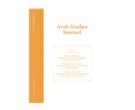Recent research shows that lighting in cities has become a salient public policy issue. I will argue here that this is also the case in numerous cities in the Arab world, using some original field observations and raising several research issues—namely the inequalities of service provision in urban areas, citizens’ claims for lighting and how this issue is put on municipal agendas, and who pays service costs, at a time of increasing energy needs, and pressure for electricity savings.
Beirut Under the Spotlights
.jpg)
[Figure 1: Territories of Light in Beirut’s nightscape (© L.Le Douarin, M. Bonte)]
“Brilliant Beirut” is a superb text by Marie Bonte, a young geographer from Lyon about to begin a dissertation on the topic of Beirut’s night scene. In her post on Tim Edensor`s Lighting Research @ MMU website, she discusses the territories of light during night time in Beirut. To do so, she examines the inequalities and malfunctioning of public lighting, which leave numerous streets in the dark, notably due to a chronic lack of maintenance. She does not address power cuts, which do not affect drastically the municipal territory of Beirut, contrary to the peripheral districts of the capital city, and other Lebanese towns and cities. Conversely, the well-lit areas are largely the night-life districts, such as the Solidere area, Gemmayzeh, and Hamra. She also provides an excellent overview map which reveals how this geography of light is very unequal (See Figure 1, above).
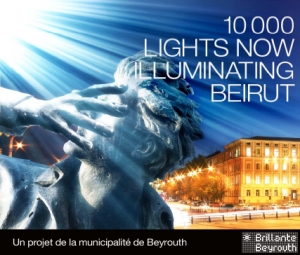
[Figure 2: Poster boasting the “Lighting Plan for Beirut” by
the municipality of Beirut. (© Municipality of Beirut - Via Marie Bonte)]
At the end of her post, Bonte also argues that the topic of public lighting is becoming a public policy issue. For this, she uses the poster recently devised by the municipality of Beirut to announce the “Lighting Plan” it has launched with support from the City of Paris, boasting the illumination of the city as an initiative to light up and showcase the city’s architectural heritage (See Figure 2 above). Further research is needed into the projects of Solidere, which have also adopted a strategy to showcase their buildings, for which the firm received a “Lighting Beirut Architecture” award. Such lighting initiatives form a new type of public urban policy in Lebanon. They need to be analyzed using approaches that bring together issues of policy shifts, urban marketing, and public-private partnerships. This lens through which to study Beirut is somehow paradoxical as we can also–or perhaps should–see the city as a metropolis of darkness, and examine instead the issue of power cuts, which has been one of my research focuses over the past few years, and the topic of a paper I recently presented at the RGS congress in London.
Public Lighting as a New Research Issue
The Beirut example is indicative of an emerging trend that is establishing public lighting as an important research topic and, I will argue, a “new” public policy focus. It is also a topic in which dwellers and stakeholders are engaged through claims that need to be accounted for, in addition to the issues of expertise, discourse, and iconography briefly mentioned above. The topic of public lighting mobilizes at least two research approaches. The first, within which Marie Bonte’s work is comprised, includes researchers like Jérôme Tadié who strives to identify and describe territories of the night–Jakarta in Tadié’s case. Roman Stadnicki was a precursor when he addressed this topic in his work on Bab as-Sabah in Sana‘a. Focusing on cities of the global south, this research tackles topics that were first addressed in France by researchers such as Jean-Michel Deleuil (1994), Luc Gwazdinski (2005) and the previously cited Tim Edensor in the United Kingdom. The topic appears to be reaching maturity, with panels organized in recent years at the Association of American Geographers (AAG) (e.g., “Nightscapes: The geographies of Urban Nights”) and the publication of several special journal issues (namely, a forthcoming issue of Urban Studies that will cover the AAG workshop, and an issue on Time-Geography in Environment and Planning A).
The second approach is more focused on lighting policies, and here, Jean-Michel Deleuil has taken the lead by forming research networks that bring together scholars and lighting professionals, such as in Luci–the Lighting Urban Community International network (Deleuil 2009; Deleuil and Daclin 2010). It is not surprising that Lyon is at the center of such research networks given the early investments put into the city’s night lighting policy. The famous “Fête des Lumières” constituted a significant laboratory for know how that has been well-exported, in addition to urban policies combining urban marketing, tourism, and the construction of a metropolitan identity. We know much less, however, regarding these issues in countries of the global south. In addition to the case of Beirut mentioned above, Jean-Michel Deleuil has nonetheless supervised some students who investigated Hanoi (Luong Thi 2010) and Rio (Chou 2013). In these works, night lighting was taken as an indicator of the municipality’s unequal treatment of districts, and lighting policies were interpreted as voluntary decisions for integrating specific districts into the city.
It is with this in mind that I now turn to presenting a few examples drawn from interviews conducted in recent years in some Arab cities, which allow me to formulate a few hypotheses about the issue at hand. I hope they will encourage more in-depth research in the field.
Lighting Jordanian Cities
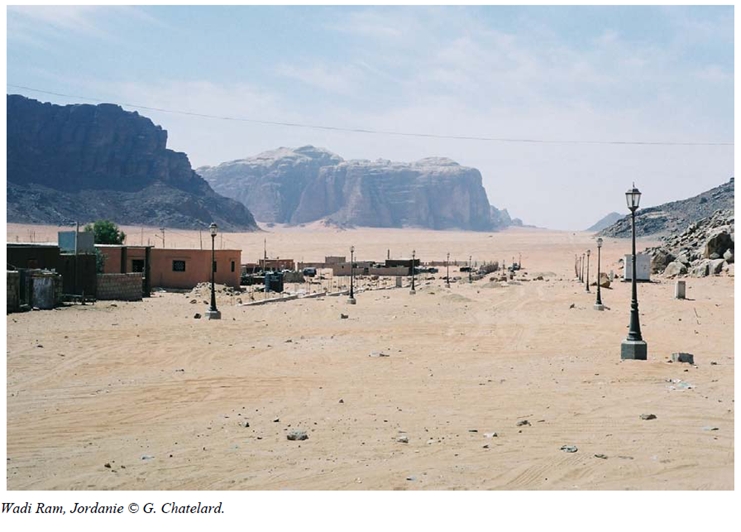
[Figure 3: Wadi Rum, Jordan. (© G. Chatelard)]
During my research in Jordan between 2008 and 2010, on electricity provision in various cities, I noticed that public lighting was an important municipal issue. The photo above, taken by Géraldine Chatelard, expresses it perfectly. It shows Wadi Rum equipped with Parisian-style streetlamps (Figure 3). At first glance, it might seem like a joke or a kitschy allusion. However, if you think about it, it also symbolizes the electrification of the periphery. Access to “modernity” includes, among other things, public lighting which is one type of national integration, via the distribution of, and access to, a public good with major symbolic status. The mayors and administrative managers whom I met in Jordan told me on several occasions how important public lighting was to their constituents, especially in villages and far-away settlements. One consequence of Jordan’s municipal amalgamation policies in the 2000s resulted in the emergence of metropolitan authorities such as the Greater Amman Municipality, that of Greater Irbid, and others that launched public lighting programs in peripheral areas, to whom inclusion in the city meant gaining access to lighting. While for some this represented a symbol of urban integration, others claimed that public lighting was also required for safety reasons. This must be understood in relation to increased concerns for road safety (as the rise in automobile traffic as well as aggressive driving have been leading to more accidents), as well as fears related to crime rates that may seem relatively low, but which are strongly experienced as a threat in village communities accustomed to keeping to themselves.
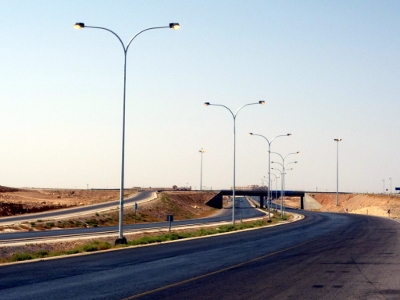
[Figure 4: On the highway south of Amman, Jordan. The lamps are lit, even during the day. Image by Eric Verdeil.]
Jordan’s major highways are equipped with lights to render the roads safer, especially given many vehicles do not have good headlights and use them sporadically (Figure 4). In her Atlas de Jordanie, Myriam Ababsa provides an interesting map that reveals the inequalities in public lighting infrastructure–even if the scale of the information is difficult to interpret. This raises questions about the ways through which demands for the installation of public lighting are developed and organized. It also raises questions about existing government’s norms and the priorities of local municipal councils in terms of equipping districts, especially given their diverse social and legal status—as Jordan includes several informal urban areas.
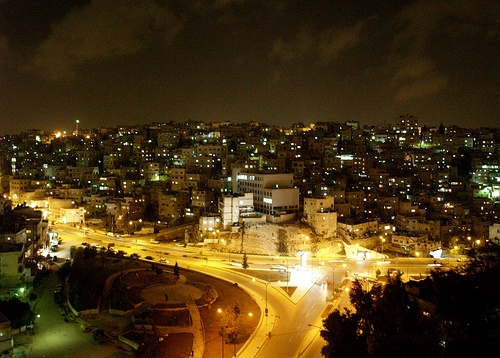
[Figure 5: Amman at night. In this photo, the contrasts in lighting between the poorly-lit modest
residential districts, and the brightly-lit traffic arteries is clearly visible. Image by Tarek/gr33ndate via Flickr.]
Yet, such policies widely promoting public lighting are extremely expensive for these municipalities, especially given electricity price hikes and concomitant cuts to public spending. In recent years, a more or less stable share of three percent of electricity consumption was allocated to the Jordan’s public lighting. However, since consumption has kept growing, the bill for public lighting has steadily increased. In addition, while they did not have to take charge of public lighting bills until 1988, municipalities now have to pay for consumption costs related to the extensions of the electrical lighting network since then – this is still subsidized however. In 2008-2009, mayors rallied repeatedly to voice their concerns to the ministry and demand additional subsidies to pay their bills, but to no avail (For more on this, see my article on local electricity policies in Jordan).
One direct consequence of this situation is increased debates about energy efficiency in the context of the energy transition. Donor agencies, namely the Agence Française de Développement, have funded feasibility surveys in connection with JEPCO, the electricity distribution operator in Amman, aimed at the introduction of new, more energy-efficient lamps. The idea of streetlamps equipped with solar panels has also been proposed. When I conducted my interviews in 2010, however, these ideas appeared to be at a standstill, except in Irbid where a municipal engineer mentioned a project that aimed to develop these new lamps. It would be interesting to see how things have evolved given that electricity price hikes have worsened since, and that, meanwhile, the municipal map has been completely revised. Indeed, large urban municipalities have been disbanded or redrawn, and numerous small municipalities with limited resources are going to be confronted with exorbitant charges, and will perhaps have to set new priorities.
Lighting Tunisian Cities
.jpg)
[Figure 6: In Djebel Lahmar, a low-income district in Tunis undergoing upgrading, having public lighting
means accessing one of the infrastructural networks symbolizing the area’s integration into the city. Image by E. Verdeil.]
While implementation costs for public lighting networks are split between municipalities and operators (e.g., subdividers, developers, etc.), municipalities bear maintenance and electricity costs after installation. On average, this represents six percent of municipal budgets’ operating costs, and this is a growing expense. Relations between municipalities and STEG, Tunisia’s public electricity operator, are complex. The amounts owed by municipalities to STEG represent an important share of the company’s debts, reaching 16.3 percent in 2011. These debts are largely due to the consumption costs of public lighting. Conversely, STEG has to pay a tax to municipalities which it has been refusing to abide by. The result is a dispute between both administrations which a recently introduced tax increase on consumers attempts to resolve.
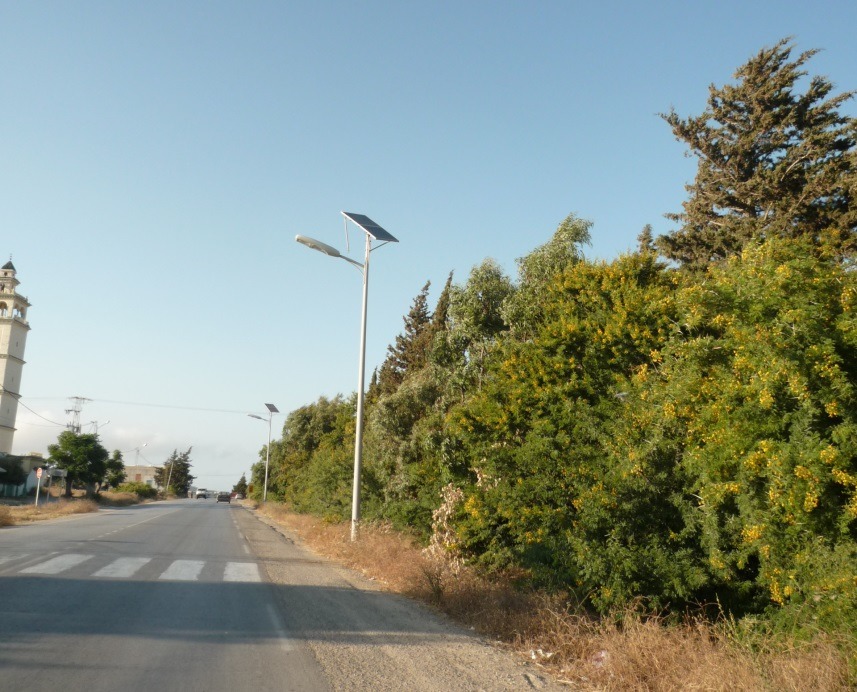
[Figure 7: New solar lamps in village areas in Tunisia. Image by Eric Verdeil]
In Sfax, mastering energy consumption associated with public lighting is a significant municipal policy issue. According to Hadj Yahia, the municipality’s general secretary, several operations have been implemented for this end, such as the installation of power gearboxes replacing regular lamps with energy-saving light bulbs, and turning off two-thirds of the lights during the darkest hours of the night. The municipality is also considering implementing embellishment lighting for its historical monuments and traffic arteries using lights equipped with solar panels, a system now frequently seen along Tunisia’s highways, especially in the countryside, as shown in Figure 7. Sfax’s public lighting policy is thus part of broader sets of strategies undertaken in the context of the energy transition. The city has recently signed an agreement with the Agence Nationale de Maîtrise de l’Energie (ANME) that aims at encouraging and developing these solutions. An international cooperation initiative led by the GIZ was also launched to support this.
Shifting the Geography of Lighting?
The Jordanian and Tunisian examples briefly discussed here, similarly to the case of Beirut analyzed by Marie Bonte, underscore the saliency of public lighting policies in Arab cities. While existing studies are predominantly focused on new lighting policies in cities, we could also imagine shifting our reading towards a geography of lighting focusing on dark and well-lit areas. Looking at the inequalities in public lighting will certainly open up many questions about norms and practices guiding the implementation of lighting in cities, and about residents’ claims in this regard. It would be particularly enlightening (pun intended) to identify public action and involvement in favour of public lighting, as well as the negotiations between residents and local authorities responsible for supplying the service.
A second perhaps more traditional and banal topic would be interrogating how the service is managed on a daily basis by municipalities. More specifically, what links can be identified between authorities, municipalities and electricity operators, for whom the subsidies granted for public lighting represent a heavy burden. This would provide information on possibilities for reducing consumption, involving differentiated lighting policies according to places or negotiations about pricing.
Finally, the question of lighting is closely associated to strategies of energy transition, and the projects mastering energy consumption through the introduction of new and more efficient technologies.
[This article is an adapted translation of an article by the author that was first published in Rumor. The author would like to thank the programme COLLENER funded by the Agence Nationale de la Recherche for supporting translation costs, Jocelyne Serveau for the translation, and Mona Harb for helpful suggestions.]
_______________
References
Ivone Chou, Dispositifs techniques et ségrégations urbaines, le cas de l’éclairage urbain à Rio de Janeiro. (INSA de Lyon : Thèse de doctorat en Géographie, Aménagement, Urbanisme, 2013).
Jean-Michel Deleuil, Lyon, la nuit: lieux, pratiques et images. (Lyon: Presses universitaires de Lyon, 1994).
Jean-Michel Deleuil et Jean-Michel Daclin, Éclairer la ville autrement: innovations et expérimentations en éclairage public. (Lausanne: Presses polytechniques et universitaires romandes, 2009).
Jean-Marie Deleuil (ed.), Villes et planification lumière: expériences et perspectives à travers le monde. Lyon, Gand, Guangzhou, Paris, Leipzig, Philadelphie, Copenhague. (Lyon: Association LUCI, 2010).
Luc Gwiazdzinski, La nuit, dernière frontière de la ville. (Paris: Ed. de l’Aube, 2005).
![[Amman at night. Image by Tarek/gr33ndate via Flickr]](https://kms.jadaliyya.com/Images/357x383xo/Fig5_Verdeil_AmmanNight.jpg)


